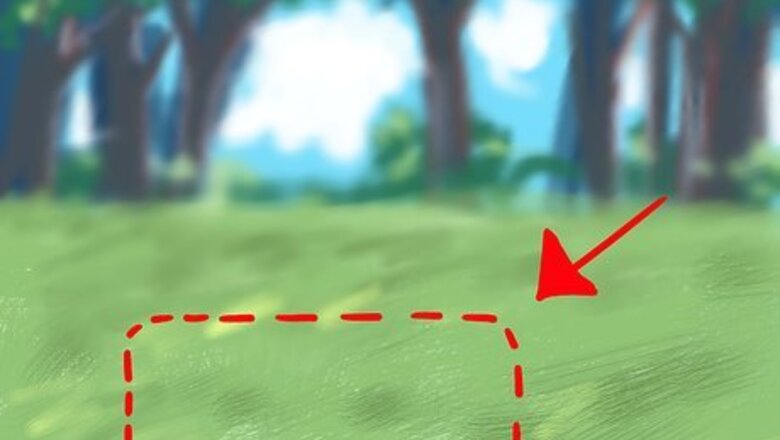
views
Preparation
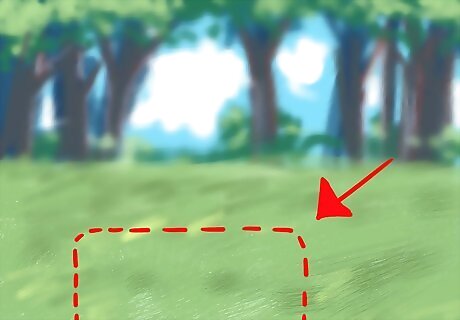
Set aside some space in which to work and an area in which the bricks can dry for a time - up to two weeks, possibly.
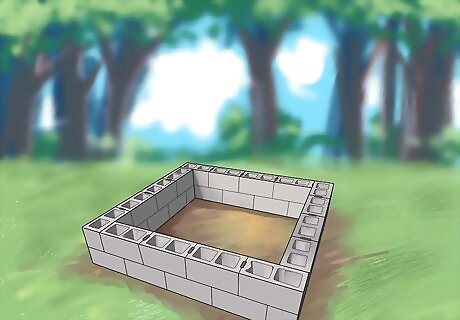
Prepare a pit that will be used to mix your sand, clay, and water. One way to do this is to get about 20 cinder blocks and arrange them in a square, two layers deep. Then line the inside of the pit with a heavy duty tarp.
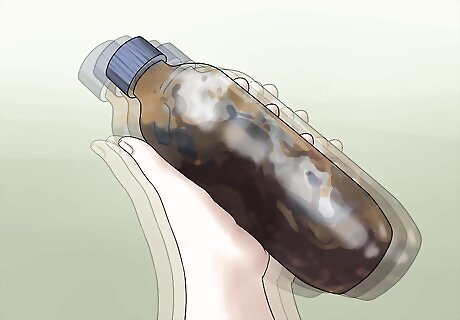
Perform a "jar test" to determine your soil suitability. Fill a jar (or plastic bottle - make sure it's see-through) halfway with the soil sample. Fill it the rest of the way with water. Shake vigorously for about a minute, then let it sit overnight. The next day, the soil will have settled into distinct bands. The bottom of the jar will have the larger-sized materials - sand and small pebbles - with smaller and smaller sized particles banding towards the top. The top band will be the clay or different silt. Ideally, the three bands will be about the same size. If your sample has more than a third sand (the bottom layer), you may not need to add any sand to your adobe.
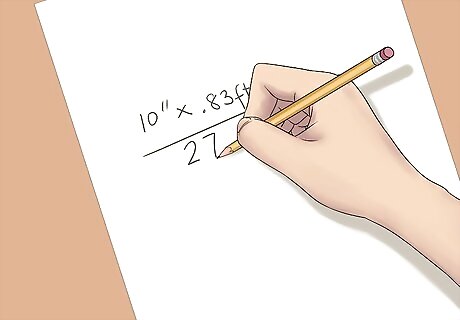
Calculate the volume of your wall: Measure the length of the wall in feet. Determine the height of the wall in feet. Since bricks (and thus the wall) are made 10" (25.5 cm) thick, multiply the length by height by 0.83 (10 in = .83 ft). Divide that by 27. This is the total volume in cubic yards of the wall.
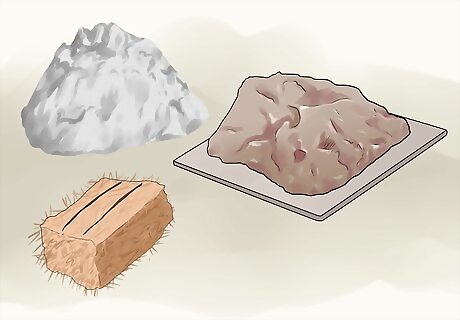
Obtain materials: Sand (about half - 50% of your total volume). Sand is usually sold by the ton - you can calculate tonnage by multiplying your volume by .83. The sand should be relatively fine sand - beach sand or slightly larger works fine. NOTE: The amount of sand you mix in is very dependent upon the clay you have available, your climate, and how strong you want the wall. It's entirely relative - and there's really no wrong way to do this. Clay (about a third of your total volume). Again, clay or fill dirt is usually sold by the ton. Multiply your volume by .9 if it is dry, .7 if it is wet. Straw (about 10 - 20% of your total volume). Straw is sold in bales of various sizes. The most common "big" bales are 14"x18"x36" (35.5 centimeter (14.0 in) x 45.7 centimeter (18.0 in) x 91.4 centimeter (36.0 in), which is .15 cubic yards. So multiply your total volume by .015 to get the number of "big" bales you'll need.
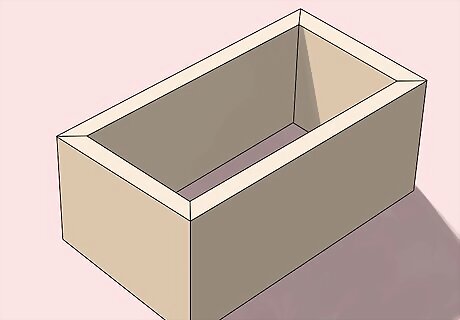
Create a form for making the bricks. A typical form is made using two 2x4 studs, which are 96" long. Note that a typical stud is actually 1.5" (3.8 cm) by 3.5" (8.8 cm), which is why the lengths are odd (25.5", for example).
Making the Bricks
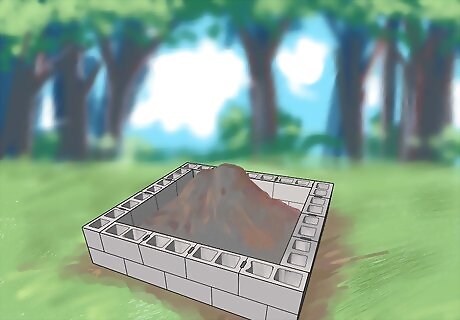
Shovel together sand and clay in the pit. These should be mixed according to the amounts you have and your own desires - again, there's really no wrong way.
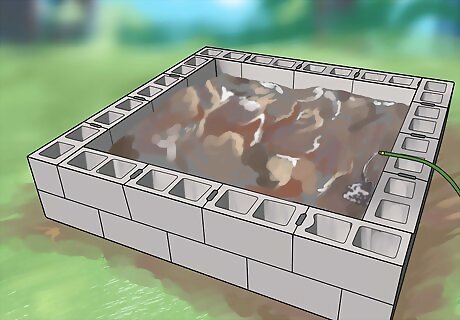
Add water - enough to make the mixture "soupy."
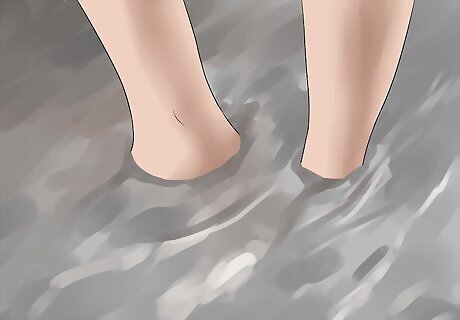
Mix together - the easiest way to do this is to take off your socks and shoes, roll up your pant legs, and jump in with both feet. Mix around until you don't find any dry patches.
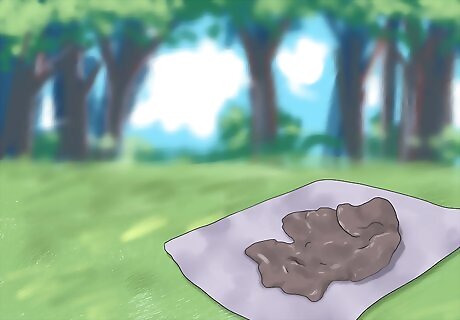
Lay out a tarp and shovel on several shovel loads of the mud. As you scoop out the mud, try to let excess water drain back into the pit. You can also use a 5 gallon (18.9 L) bucket to scoop out mud onto the tarp. Cover about a third of the center of the tarp.
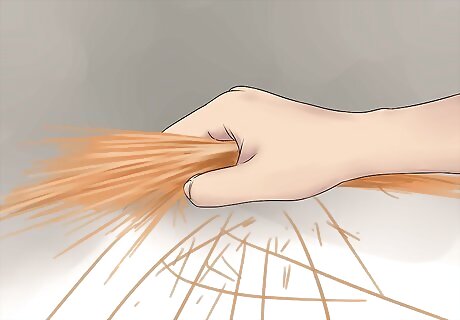
Sprinkle a couple of large handfuls of straw onto the mud. You want to break it up so it's not clumpy - and take out any "sticks" of straw that might hurt when you step on them.
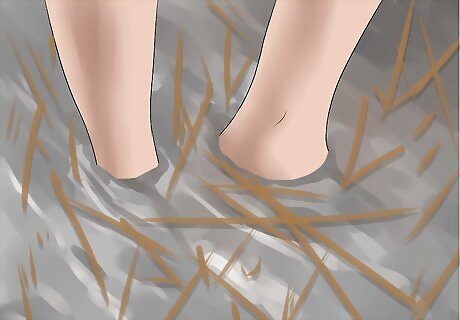
Stomp on the mixture. The goal is to thoroughly mix the straw and the mud, so stomp around a lot.
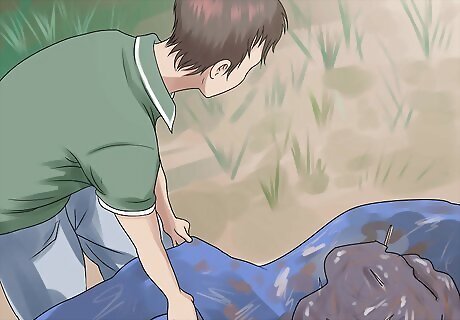
Pick up one side of the tarp so that the mixture falls back onto itself - sort of like kneading dough.
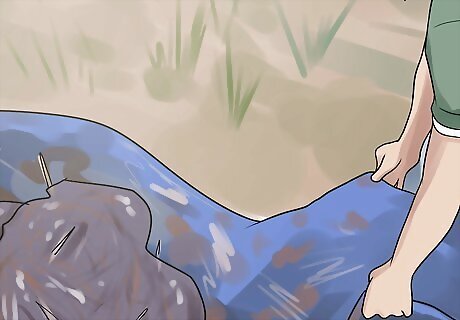
Keep mixing together in this way, adding straw as needed, until the mixture is fairly solid and hard to knead.
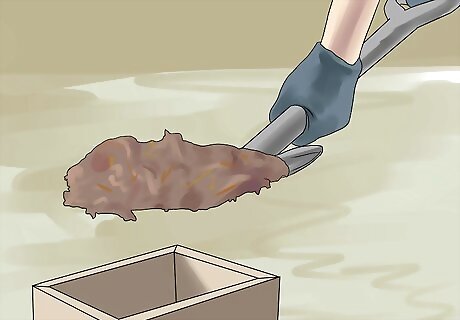
Grab large handfuls of the mixture and put them into the brick form. Make sure to push the mixture into the corners well, and punch it into the form so it is filled and solid.
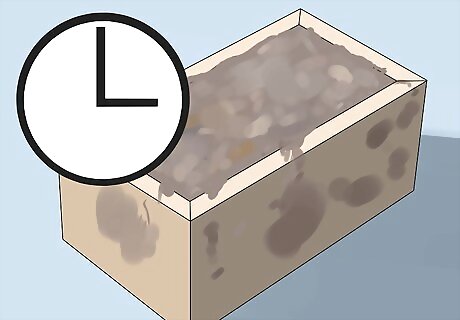
Let the bricks dry in the form for a short while - 15 minutes at least. You can then remove the form and start filling it again.
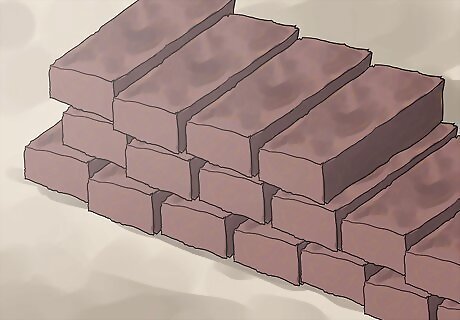
Let the bricks sit where they are and dry a while - an hour or so. When they're solid and dry enough to move, stand them up on their sides to dry some more. It may take a week until they're dry enough to build the wall with.
Building the Wall
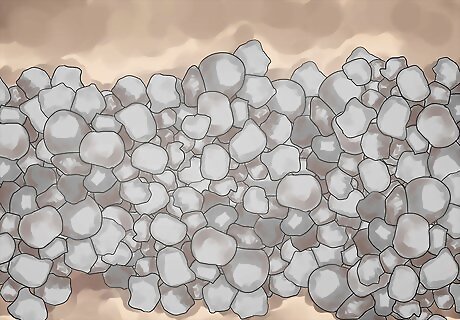
Lay a foundation of gravel or stone.
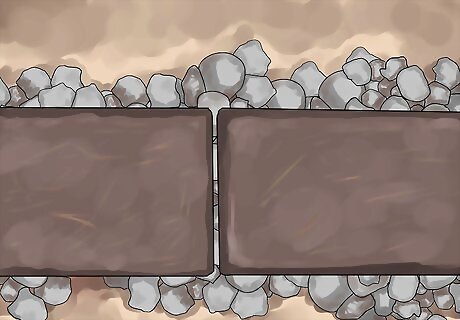
Lay bricks flat on your foundation.
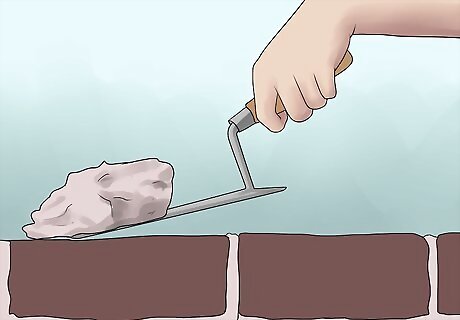
Use the mud mixture - or mud and straw mixture - as mortar between bricks. You can layer the mortar up to 4" ( 10 cm) thick, though 1" or 2" (2.5 cm - 5 cm) is probably enough.
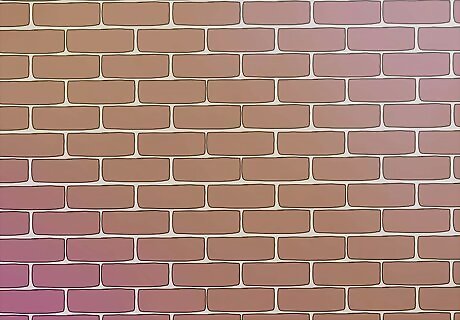
Use the mud mixture (it should be drier than the mixture you made for the bricks) as a plaster once the wall is built and dry. This adds a stucco look to the wall, which can look very pleasing to the eye.

















Comments
0 comment